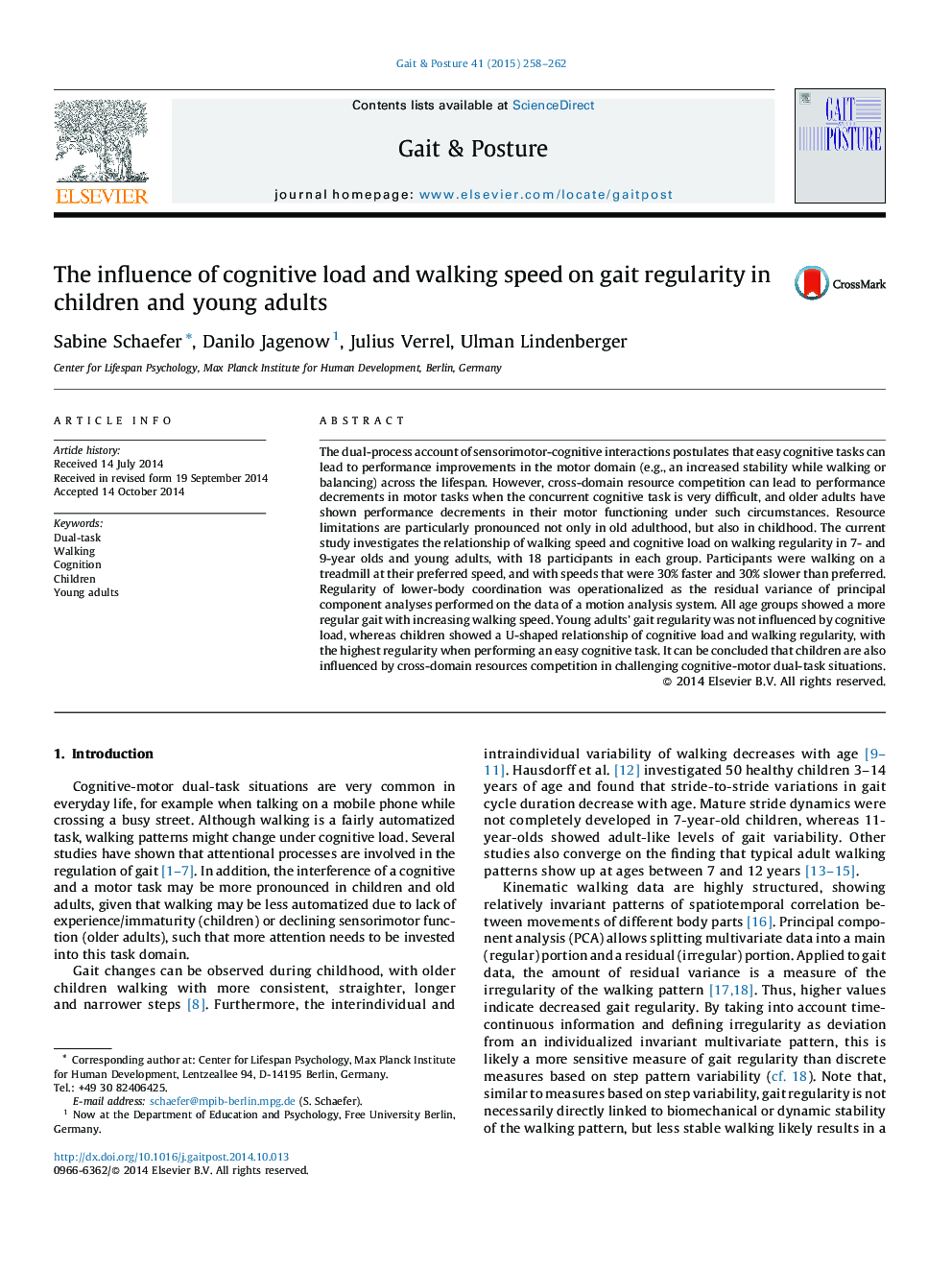| Article ID | Journal | Published Year | Pages | File Type |
|---|---|---|---|---|
| 6205731 | Gait & Posture | 2015 | 5 Pages |
â¢How do walking speed and cognitive load influence walking stability?â¢We tested 7- and 9-year olds and young adults (n = 18 per group).â¢Gait stabilizes with increasing walking speed in all age groups.â¢Young adults' gait stability is not influenced by cognitive load.â¢Children show a U-shaped relationship of cognitive load and walking stability.
The dual-process account of sensorimotor-cognitive interactions postulates that easy cognitive tasks can lead to performance improvements in the motor domain (e.g., an increased stability while walking or balancing) across the lifespan. However, cross-domain resource competition can lead to performance decrements in motor tasks when the concurrent cognitive task is very difficult, and older adults have shown performance decrements in their motor functioning under such circumstances. Resource limitations are particularly pronounced not only in old adulthood, but also in childhood. The current study investigates the relationship of walking speed and cognitive load on walking regularity in 7- and 9-year olds and young adults, with 18 participants in each group. Participants were walking on a treadmill at their preferred speed, and with speeds that were 30% faster and 30% slower than preferred. Regularity of lower-body coordination was operationalized as the residual variance of principal component analyses performed on the data of a motion analysis system. All age groups showed a more regular gait with increasing walking speed. Young adults' gait regularity was not influenced by cognitive load, whereas children showed a U-shaped relationship of cognitive load and walking regularity, with the highest regularity when performing an easy cognitive task. It can be concluded that children are also influenced by cross-domain resources competition in challenging cognitive-motor dual-task situations.
